There is a common misconception that geologists spend their time identifying minerals and rocks. Although we do those things, they are merely tools to get at more interesting things. Mineral identification is an important tool, so we will start with that. The material below is a brief, illustrative introduction to mineral identification, which you will practice in lab. You need experience with mineral ID, so you can move on the the next step.
Crystal shape (habit)
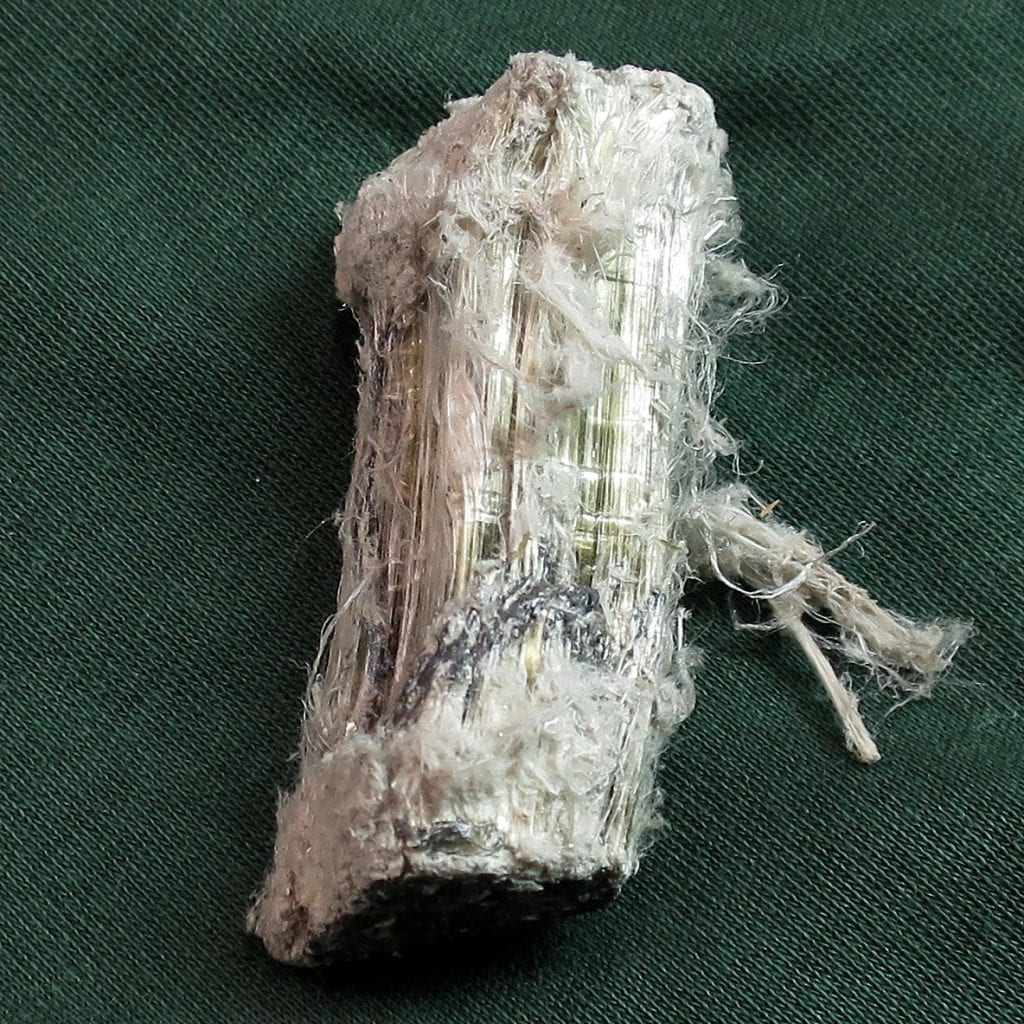
Fibrous = fiber-like, similar to hair or cotton fibers.
Example: chrysotile asbestos.

Acicular = needle-shaped.
Example: natrolite (a silicate).
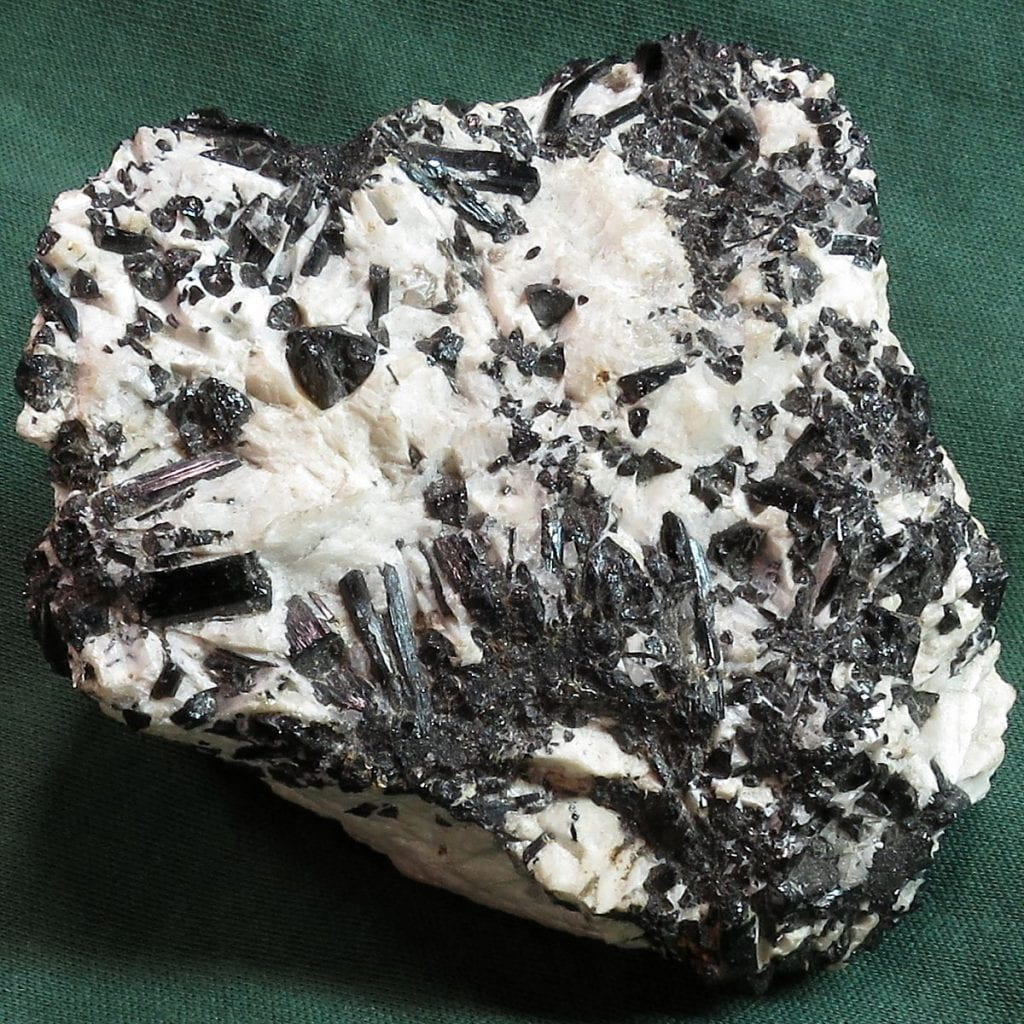
Prismatic = prism-shaped.
Example: black tourmaline in feldspar and quartz.

Blocky = shaped like a block or brick.
Example: orthoclase (one of the feldspar group).

Equant = approximately equal size in all directions.
Examples: top-left, limonite replacement of pyrite; top-right, grossular garnet; bottom -left, galena; bottom-right, almandine (Fe) garnet.

Platy = plate-shaped, flat.
Examples: left is biotite, right is muscovite.
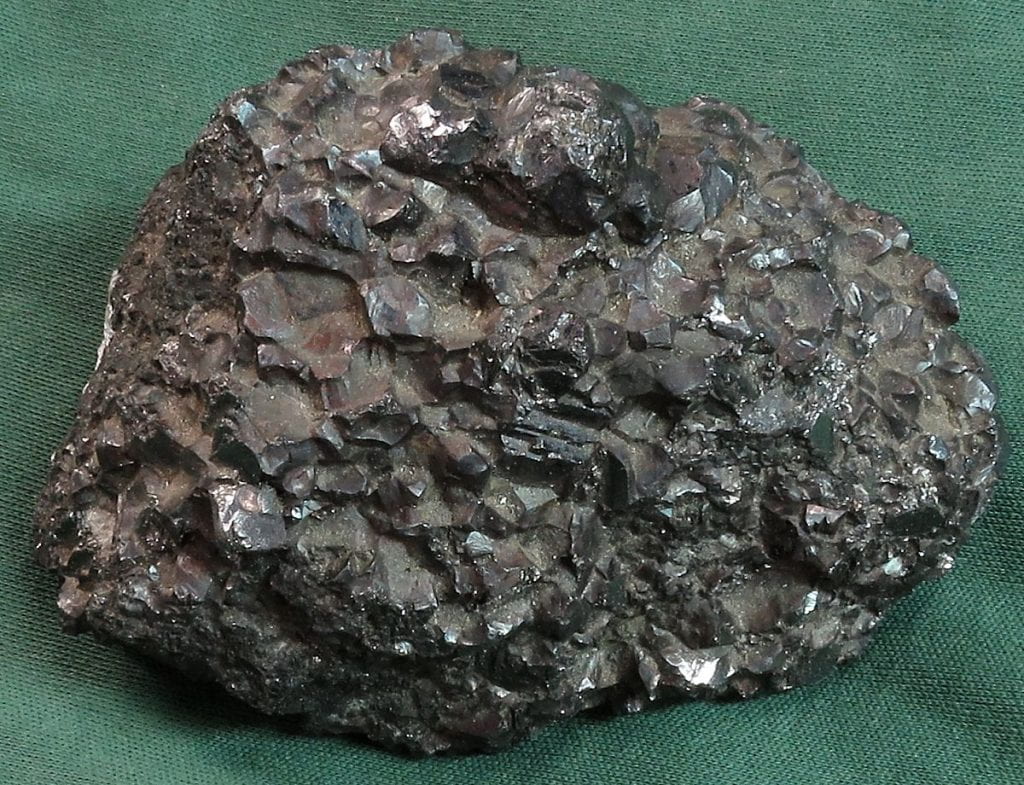
Massive = compact mass of interlocking crystals.
Example: magnetite.
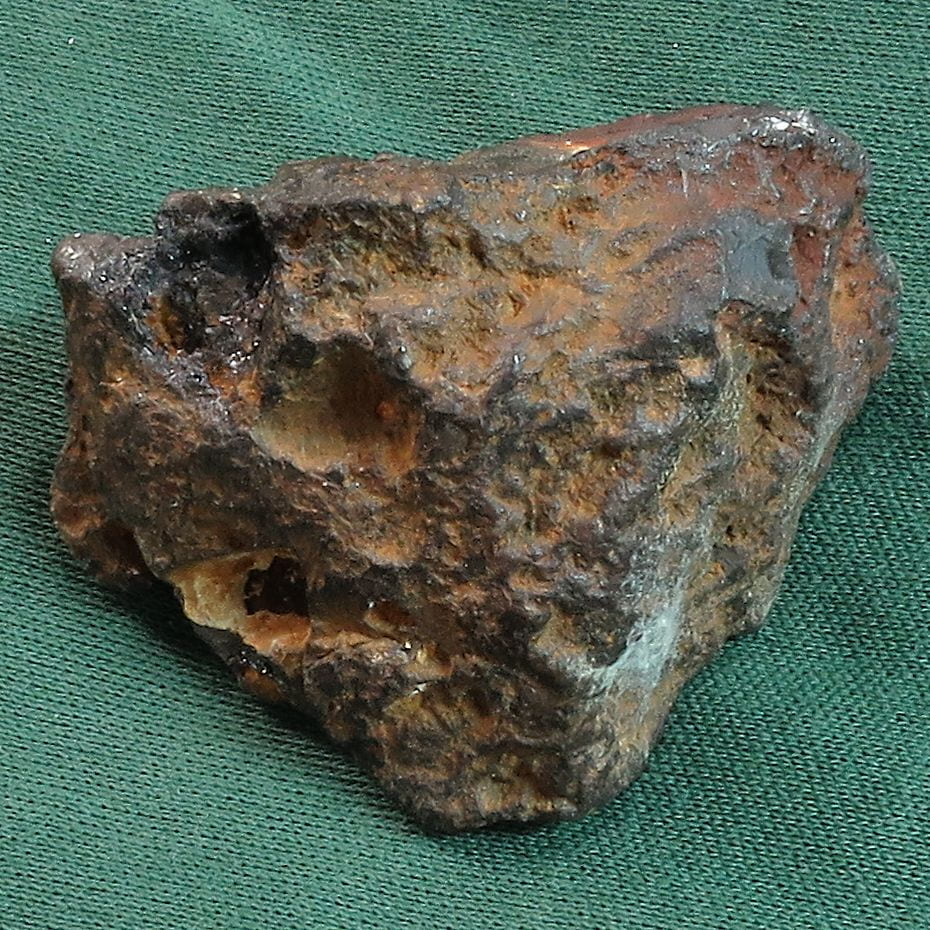
Earthy = fine-grained with a dull, dirt-like appearance.
Example: limonite.
Mineral cleavages: planes of easy breaking

0 cleavages, no planes of easy breaking, results in shell-like fracture surfaces.
Example: obsidian, volcanic glass.
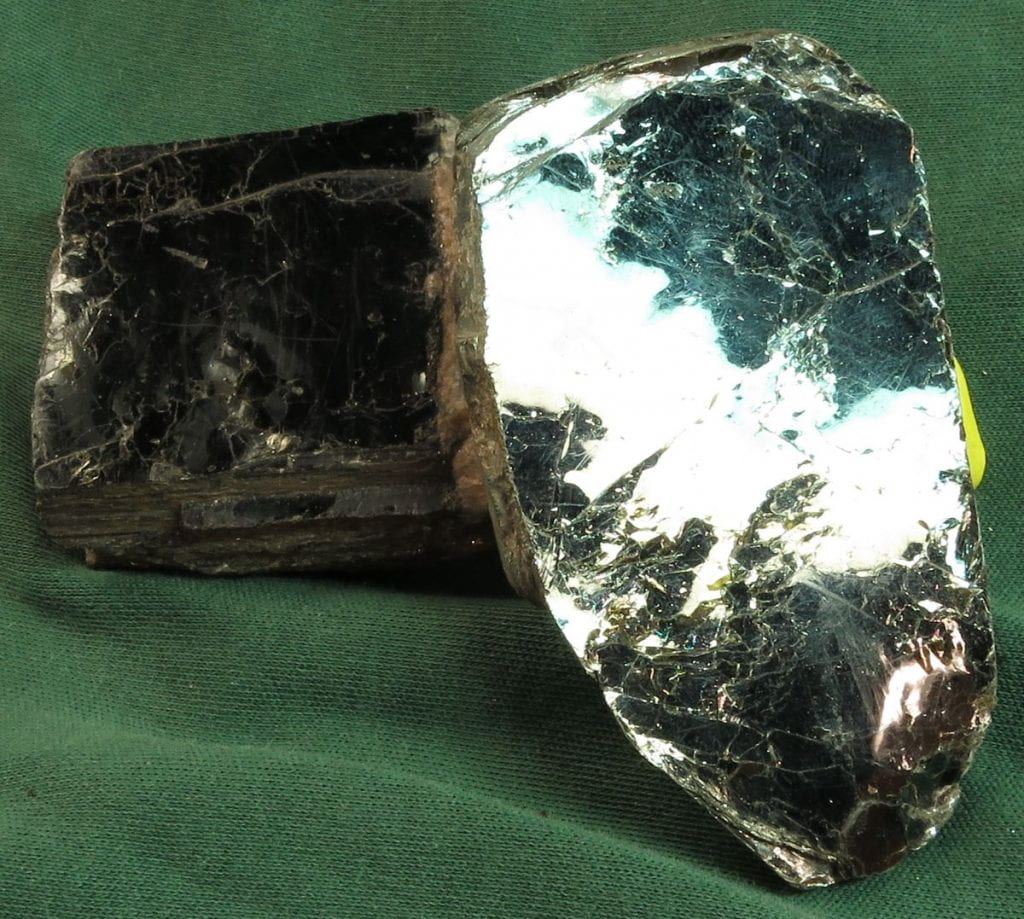
1 cleavage, one plane of easy breaking, resulting in plate- or sheet-like pieces.
Example: biotite.
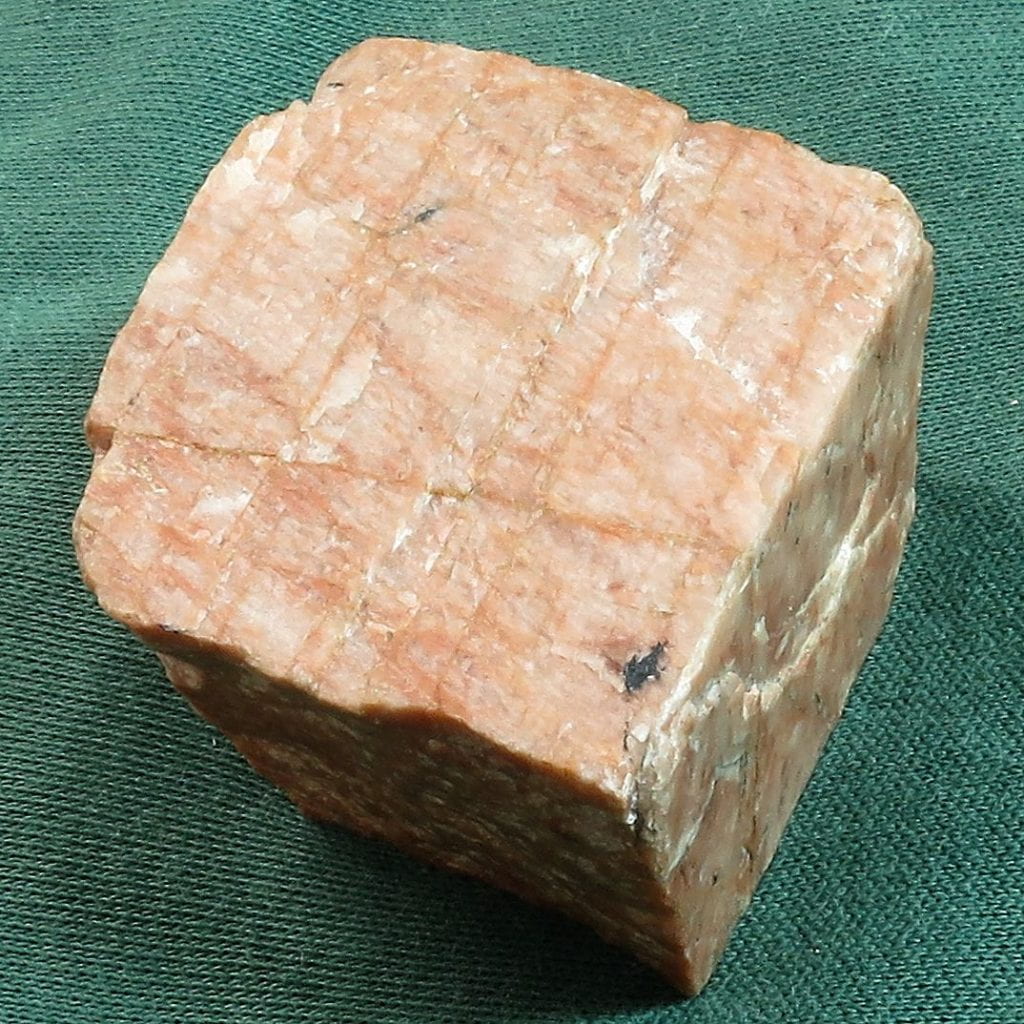
2 cleavages, with an angle of intersection of about 90°.
Example: orthoclase.
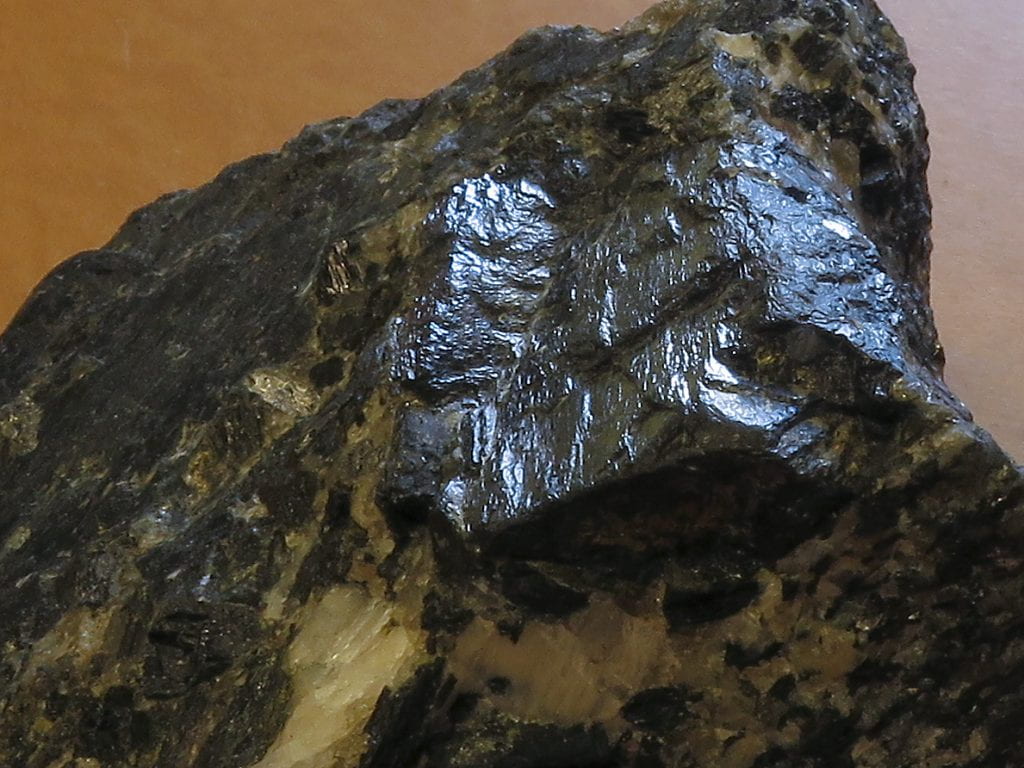
2 cleavages, with an angle of intersection of about 60 and 120°. The angle can be seen as the ridge in the top-right. One cleavage surface slopes off to the right, one down to the left. The cleavage is not particularly good, unlike mica, causing there to be a number of steps in the surfaces.
Example: hornblende.
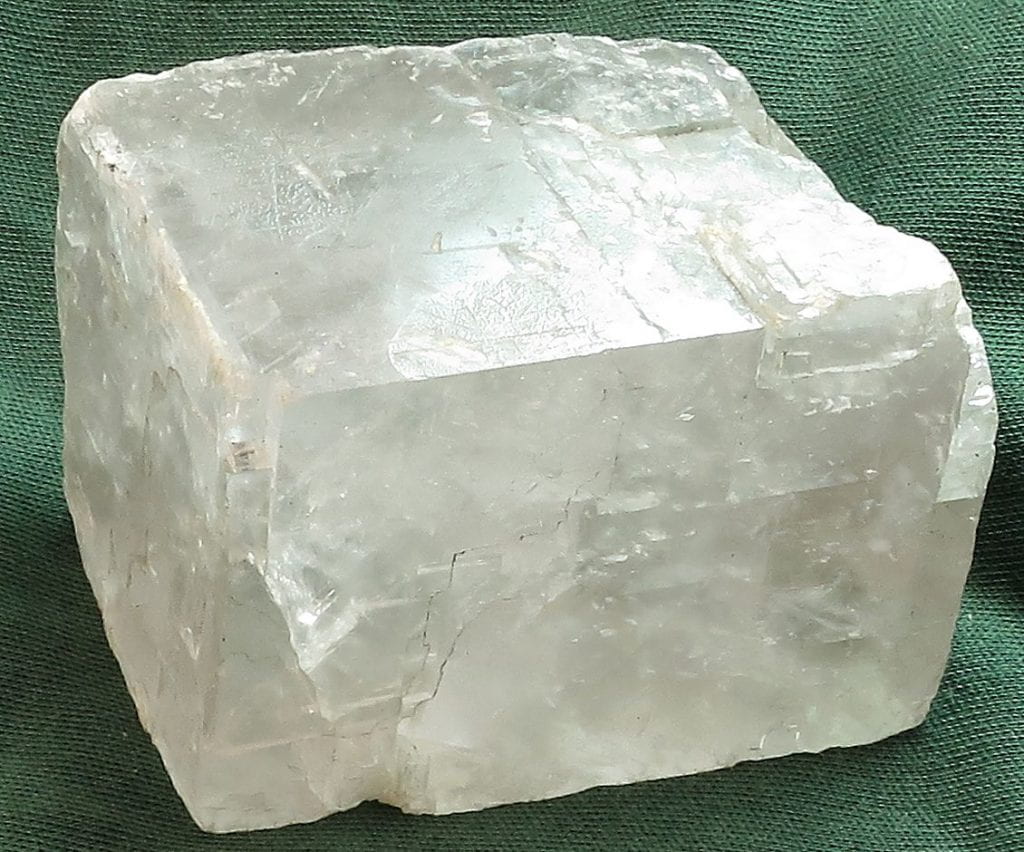
3 cleavages, with an angle of intersection of 90°.
Example: halite.
 |  | Crystal faces (left) generally do not penetrate into the crystal body, whereas cleavages can, as parallel sets of cracks. Cleavages can form steps on the outside of the crystal, each parallel to a cleavage direction, but crystal faces generally do not. Example: quartz. Quartz has no cleavages, so it breaks like glass (right). Fractures inside the crystal are generally in random directions, and even curve. |
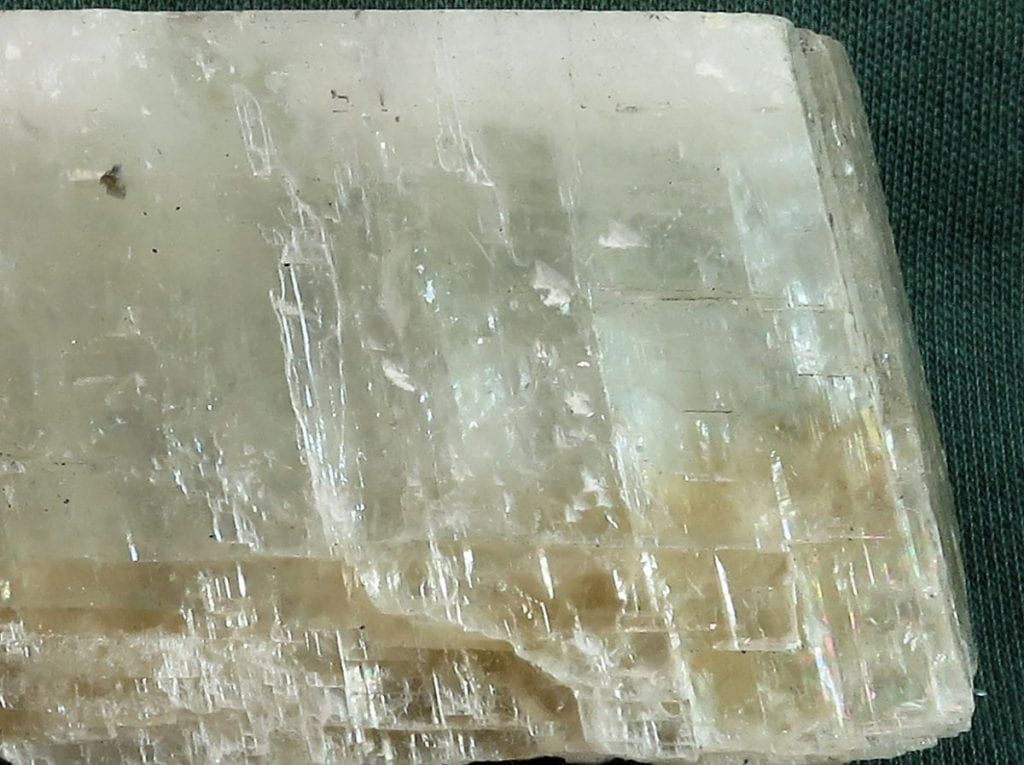
Cleavages form along planes of weakness, so the cracks can penetrate into the body of the crystal in parallel sets.
Example: calcite, also see halite, above.
How crystal form affects luster

Example: hematite.
Left, earthy hematite has microscopic crystals that are loosely stuck together.
Middle, in sub-metallic hematite the crystals are densely packed, and larger.
Right, in metallic hematite the crystals are large, with mirror-like surfaces.
Color compared to streak (mineral powder)
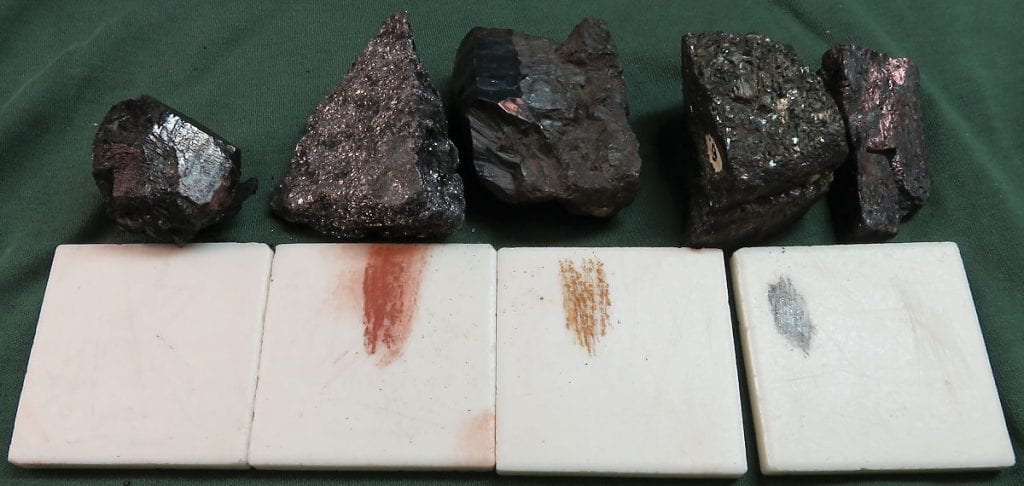
Here are five minerals that all appear black, dark gray, or dark brown. The streak color, powder scraped off on the white plates, is more reliable than the bulk mineral color:
Streak color from left to right: tourmaline is colorless, hematite is brick-red, limonite is yellow-brown, magnetite is black, hornblende is colorless.
Mohs scale of mineral hardness
 |  | 1) Left Apatite (H=5) is scraped once or twice across the quartz crystal face. Some powder is visible. 2) Right Wipe the powder off to see if a scratch is left behind. No scratch, so quartz is harder than apatite. |
 |  | 3) Left Topaz (H=8) is scraped once or twice across the quartz crystal face. Some powder is visible. 4) Right Wipe the powder off to see if a scratch is left behind. Scratches are visible, so quartz is softer than topaz. |
Conclusion: quartz has a hardness between 5 and 8, which fits with its actual hardness of 7.
 |  | 1) Left Gypsum (H=2) is scraped once or twice across the fluorite crystal face. Some powder is visible. 2) Right Wipe the powder off to see if a scratch is left behind. No scratch, so fluorite is harder than gypsum. |
 |  | 3) Left Apatite (H=5) is scraped once or twice across the fluorite crystal face. Some powder is visible. 4) Right Wipe the powder off to see if a scratch is left behind. Scratches are visible, so fluorite is softer than apatite. |
Conclusion: fluorite has a hardness between 2 and 5, which fits with its actual hardness of 4.
The feldspar group: most abundant minerals in the crust

All feldspars have almost identical hardness, structure, cleavage, streak, and form. Their most distinguishing characteristic is usually color.
Left: pink orthoclase
Middle: white albite
Right: gray labradorite

The plagioclase sub-group of feldspars, including albite and labradorite, usually have fine striations on one of the cleavage surfaces. This is the result of something called twinning. They can be seen by looking closely with a hand lens or microscope, and tilting the sample to reflect a source of light.

Some labradorite is iridescent, a property best seen when the mineral is wet. The sample will have to be tilted in different directions in bright light to see this. Iridescent colors are most commonly blue and green, but yellow, orange, and red occur too.
